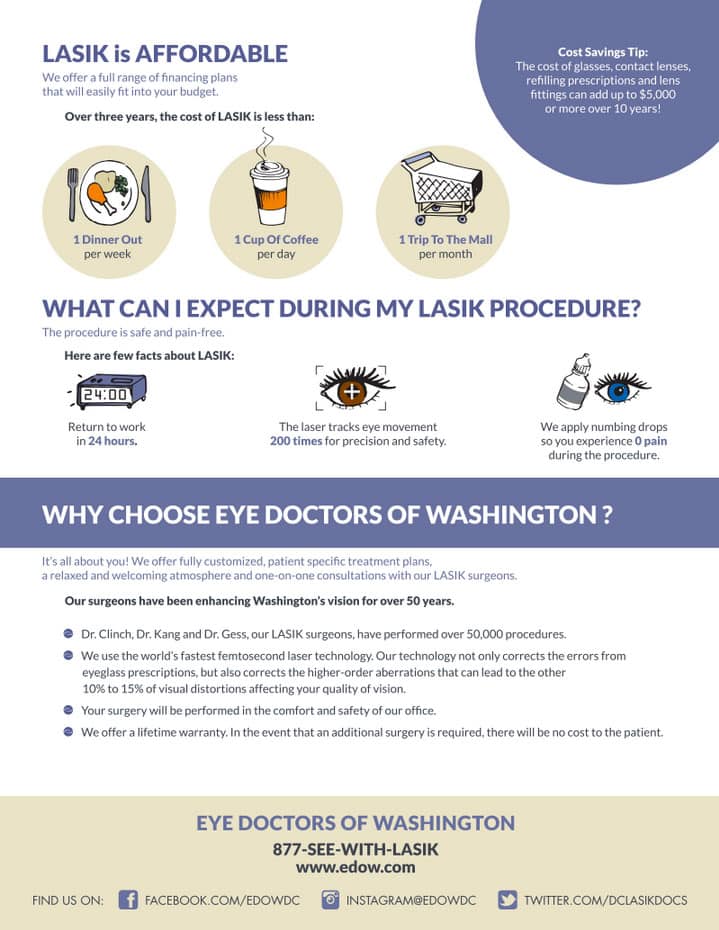Just How Does SMILE Eye Surgical Treatment Compare To LASIK And PRK?
Just How Does SMILE Eye Surgical Treatment Compare To LASIK And PRK?
Blog Article
Short Article Writer-Humphries Tang
If you have actually been considering SMILE eye surgery, you may ask yourself just how it stacks up against LASIK and PRK. Each treatment has its very own collection of advantages and considerations. From quicker recuperation times to potential threats, there are key distinctions you should recognize prior to deciding. Recognizing these differences will assist you make an informed choice that aligns with your certain needs and expectations. Curious to know even more concerning how these procedures contrast carefully? Keep on discovering to get an extensive understanding of SMILE, LASIK, and PRK.
SMILE Eye Surgical Treatment Overview
If you're taking into consideration SMILE eye surgical treatment, you'll discover it to be a minimally intrusive procedure with a quick recovery time. Throughout SMILE (Small Incision Lenticule Extraction), a laser is made use of to produce a small, specific incision in the cornea to eliminate a little item of cells, improving it to remedy your vision. This varies from LASIK, where a flap is produced, and PRK, where the outer layer of the cornea is totally removed.
Among the vital benefits of SMILE is its minimally invasive nature, bring about a faster recovery process and much less discomfort post-surgery. The healing time for SMILE is relatively quick, with numerous patients experiencing enhanced vision within a day or two. This makes it a popular option for those looking for a convenient and efficient vision correction treatment. Furthermore, SMILE has actually been shown to have a reduced threat of completely dry eye disorder compared to LASIK, making it a favorable option for individuals concerned regarding this potential side effect.
Differences Between SMILE, LASIK, and PRK
When contrasting SMILE, LASIK, and PRK eye surgeries, it's important to recognize the distinct strategies made use of in each treatment for vision correction.
SMILE (Small Cut Lenticule Extraction) is a minimally invasive procedure that entails creating a tiny laceration to extract a lenticule from the cornea, improving it to correct vision.
LASIK (Laser-Assisted In Situ Keratomileusis) entails creating a thin flap on the cornea, utilizing a laser to improve the underlying tissue, and afterwards repositioning the flap.
PRK (Photorefractive Keratectomy) removes the outer layer of the cornea prior to improving the tissue with a laser.
The main distinction lies in the method the cornea is accessed and dealt with. SMILE is flapless, making it an excellent alternative for individuals with slim corneas or those involved in call sporting activities. LASIK supplies fast aesthetic healing as a result of the flap creation, however it may posture a greater danger of flap-related complications. PRK, although having cataract surgery , avoids flap-related concerns completely.
Recognizing these variations is important in selecting one of the most suitable procedure for your vision adjustment needs.
Advantages And Disadvantages Contrast
To evaluate the benefits and downsides of SMILE, LASIK, and PRK eye surgeries, it's necessary to consider the certain benefits and possible constraints of each procedure. LASIK Surgeons supplies the benefit of a minimally invasive procedure, with a smaller sized incision and possibly quicker recuperation time compared to LASIK and PRK. It additionally lowers the risk of dry eye post-surgery, a common adverse effects of LASIK. Nonetheless, SMILE might have restrictions in dealing with higher degrees of nearsightedness or astigmatism compared to LASIK.
LASIK surgical procedure supplies fast visual recovery and marginal pain throughout the treatment. It's very reliable in treating a wide range of refractive errors, consisting of nearsightedness, hyperopia, and astigmatism. Yet, LASIK carries a danger of flap complications, which can impact the corneal structure.
PRK eye surgery, while not as popular as LASIK, avoids developing a corneal flap, minimizing the risk of flap-related problems. It's suitable for people with thin corneas or irregular corneal surfaces. However, PRK has a much longer recovery time and might involve a lot more pain during the healing procedure.
Final thought
So, when it comes to choosing in between SMILE, LASIK, and PRK, consider it like picking the perfect set of shoes. Astigmatism LASIK is like a streamlined, comfortable pair of sneakers - fast and simple.
LASIK is extra like trendy high heels - showy and quick, but with some potential threats.
PRK is like strong treking boots - reliable and durable, but calling for a little bit even more time and effort.
Ultimately, the best selection relies on your individual requirements and choices.
